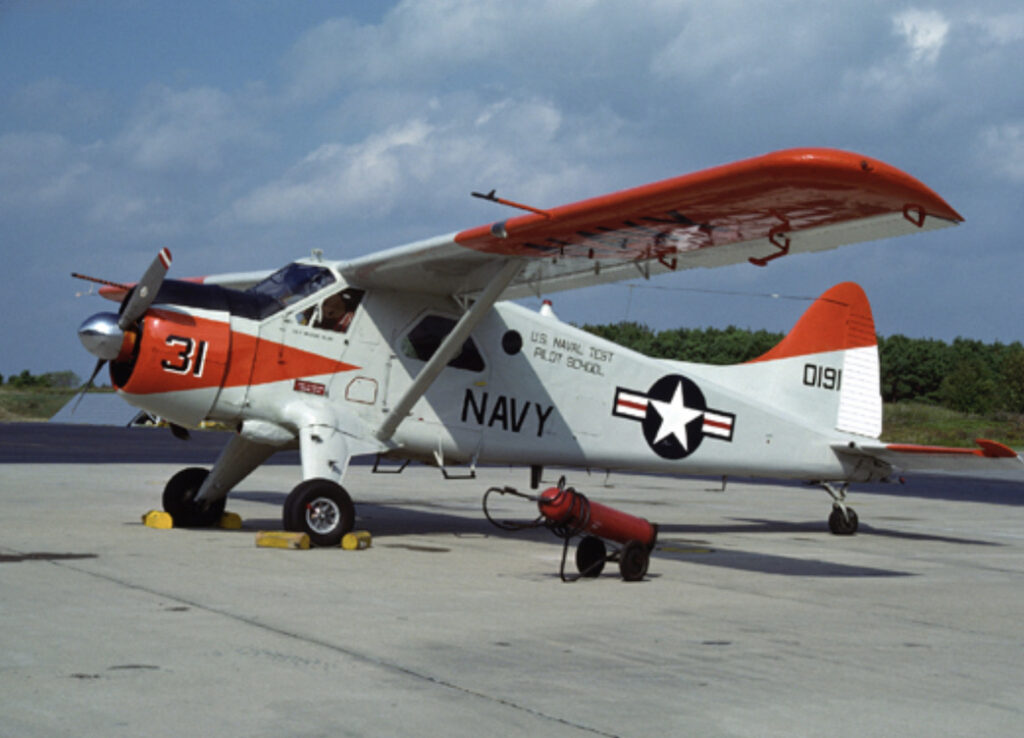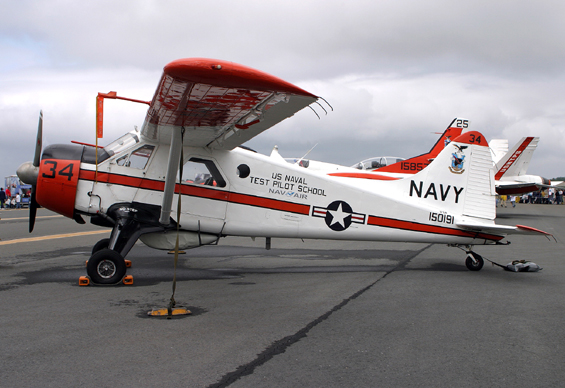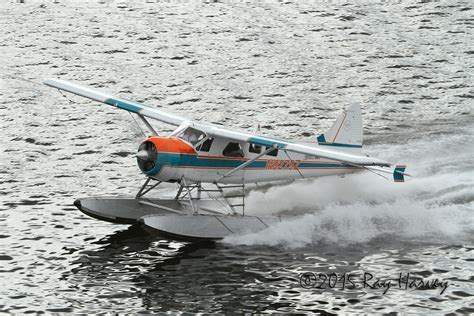Aircraft Information
> Aircraft Make: DeHavilland of Canada. Model: DHC-2 (Military: U-6). Nickname: Beaver
> Aircraft Mil Civ Description: Airplane SE Piston
> FAA Category and Class: airplane Single Engine Land
> Engine Description: Single Engine
Aircraft Experience
> As of: 11/4/2024
> Number of Hours Flown: 631
> Number of Times Flown: 368
> Other Aircraft Models Associated: U-6
First Flown Information
> Sequence First Flown: 22
> Date First Flown: 3/20/1986
> Location First Flown: NAS Patuxent River, MD (KNHK)
> Who and/or What Organization First Flown With: US Naval Test Pilot School, Baldwin

The original “Teakettle 31”, USNTPS U-6
(c) US Navy
Recollections: People often ask me “What’s your favorite aircraft?” I usually answer with some variation of “Can’t pick just one”. But, the short list ALWAYS includes the Beaver. Why? Because it’s a joy to fly but, beyond that, it is one of the best airplanes that the US Naval Test Pilot School (USNTPS) has in its curricula. Period. This statement often elicits skepticism. I usually address this skepticism with the statement “The U-6 Beaver, as it’s used at TPS, is the perfect F-35 simulator.” This generally confuses and/or adds to the skepticism. I always go on to explain it this way:
One of the missions of USNTPS is to begin to instill in its students “adaptability”. The ability to adapt to new and foreign situations in the conduct of flight test. Ultimately that’s what a tester does….adapts to a new aircraft, a new aerodynamic modification or engine, a new system installed in the aircraft. They must PLAN for their test, CONDUCT the test, and REPORT on the test, all on something that may be very foreign to them. They must adapt, and overcome–to one degree or another–that destabilizing feeling when you’re presented with something new or, to you, unusual. The USNTPS curricula bakes this into their students by repetitive exposure to a huge variety of aircraft. The students test plan, fly, and report on perhaps 20-25 different aircraft during the one year course. And, perhaps the BEST at this role of teaching “adaptability” (at least for the Fixed Wing students) is the U-6 Beaver. Think about it. Most pilots and engineers/NFO’s come to USNTPS (even 30 years ago, and certainly today) without ever having flown a reciprocating-engined airplane. Without operating an engine with 3 levers, just for one engine. Certainly without ever having flown a tailwheel aircraft. In that way, the “newness” of this admittedly 77 year old design is as foreign to a USNTPS student as the prototype F-35 was to the first cadre of its testers.

“Tester 34”, USNTPS U-6 (stock photo)
(c) US Navy
I always loved flying the Beaver, watching the students slowly learn how to fly it. Thinking back on it, it’s amazing that the Navy let me do this because I wasn’t a “taildragger guy”. It’s a testament to how forgiving the Beaver is and to the strength of the USNTPS Instructor checkout program.
Flying the Beaver was also a lesson in variety. My first flight in the Beaver (while a student) was with a Royal Navy helicopter pilot. I flew it twice more as a student with an ex-Brit fighter pilot. When I came back as an instructor, I was trained by Chris Wheal, Tom Russell, Jay Elliott, Mike Carriker and others. I went on to fly it hundreds of times more, on Qual Eval 1 (the first chance for a student to evaluation how an airplane flies…it’s “handling qualities” and to communicate their perspective), Lateral-Directional intro and checkride flights (the U-6 has some interesting Lat-Dir characteristics) and on glider tow flights (the Beaver is a wonderful, if uneconomical, tow plane).
When my family asks me what I want for Christmas present, my answer is always “A DHC-2 Beaver on floats”. I watch them fly by my house in the Seattle area almost daily and the sound is wonderful. I’ve flown a Beaver on floats twice, both at the behest of the Navy. USNTPS often hires a Beaver on floats for a Qual Eval (more of that “adaptability training”) and, in 1988, I flew one at Lake Tahoe to evaluate the idea of TPS buying their own set of floats and doing an exercise using our own floatplane (we already did our own float helicopter using an OH-58 equipped with floats). I discovered that–as good as the Beaver is on wheels–it’s AMAZING on floats. Almost bullet proof. But, the CO decided against getting our own floatplane, concerned about currency and safety. Rumor has it that TPS is modifying their U-1 to turbine power and purchasing floats. Perhaps I’ll get recalled to be an instructor!

DHC-2 N9279Z (stock photo)
(c) Flickr.com
Leave a Reply